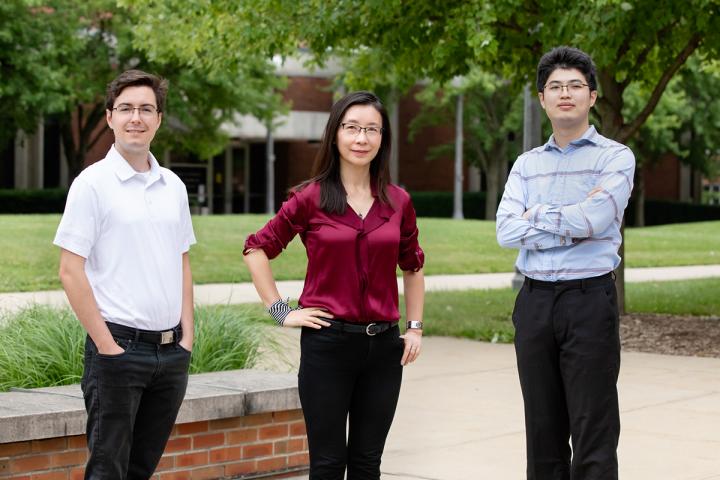
Credit: Photo by L. Brian Stauffer
CHAMPAIGN, Ill. — Electronic filters are essential to the inner workings of our phones and other wireless devices. They eliminate or enhance specific input signals to achieve the desired output signals. They are essential, but take up space on the chips that researchers are on a constant quest to make smaller. A new study demonstrates the successful integration of the individual elements that make up electronic filters onto a single component, significantly reducing the amount of space taken up by the device.
Researchers at the University of Illinois, Urbana-Champaign have ditched the conventional 2D on-chip lumped or distributed filter network design – composed of separate inductors and capacitors – for a single, space-saving 3D rolled membrane that contains both independently designed elements.
The results of the study, led by electrical and computer engineering professor Xiuling Li, are published in the journal Advanced Functional Materials.
“With the success that our team has had on rolled inductors and capacitors, it makes sense to take advantage of the 2D to 3D self-assembly nature of this fabrication process to integrate these different components onto a single self-rolling and space-saving device,” Li said.
In the lab, the team uses a specialized etching and lithography process to pattern 2D circuitry onto very thin membranes. In the circuit, they join the capacitors and inductors together and with ground or signal lines, all in a single plane. The multilayer membrane can then be rolled into a thin tube and placed onto a chip, the researchers said.
“The patterns, or masks, we use to form the circuitry on the 2D membrane layers can be tuned to achieve whatever kind of electrical interactions we need for a particular device,” said graduate student and co-author Mark Kraman. “Experimenting with different filter designs is relatively simple using this technique because we only need to modify that mask structure when we want to make changes.”
The team tested the performance of the rolled components and found that under the current design, the filters were suitable for applications in the 1-10 gigahertz frequency range, the researchers said. While the designs are targeted for use in radio frequency communications systems, the team posits that other frequencies, including in the megahertz range, are also possible based on their ability to achieve high power inductors in past research.
“We worked with several simple filter designs, but theoretically we can make any filter network combination using the same process steps,” said graduate student and lead author Mike Yang. “We took what was already out there to provide a new, easier platform to lump these components together closer than ever.”
“Our way of integrating inductors and capacitors monolithically could bring passive electronic circuit integration to a whole new level,” Li said. “There is practically no limit to the complexity or configuration of circuits that can be made in this manner, all with one mask set.”
###
Professor Pingfeng Wang and postdoctoral researcher Zhuoyuan Zheng, of industrial and enterprise systems engineering; professors Yang Shao, Songbin Gong and student Jialiang Zhang, of electrical and computer engineering; and professor Wen Huang and graduate student Haojie Zhao, from Hefei University of Technology, China; also contributed to this study.
The National Science Foundation and the Jiangsu Industrial Technology Research Institute, China, supported this research.
Li is the interim director of the Holonyak Micro and Nanotechnology Laboratory and also is affiliated with mechanical science and engineering, the Materials Research Laboratory and the Beckman Institute for Advanced Science and Technology at the U. of I.
Editor’s notes:
To reach Xiuling Li, call 217-265-6354; email [email protected].
The paper “Monolithic heterogeneous integration of 3D microwave L-C elements by self-rolled-up membrane nanotechnology” is available online and from the U. of I. News Bureau. DOI: 10.1002/adfm.202004034.
Media Contact
Lois Yoksoulian
[email protected]
Original Source
https:/
Related Journal Article
http://dx.





